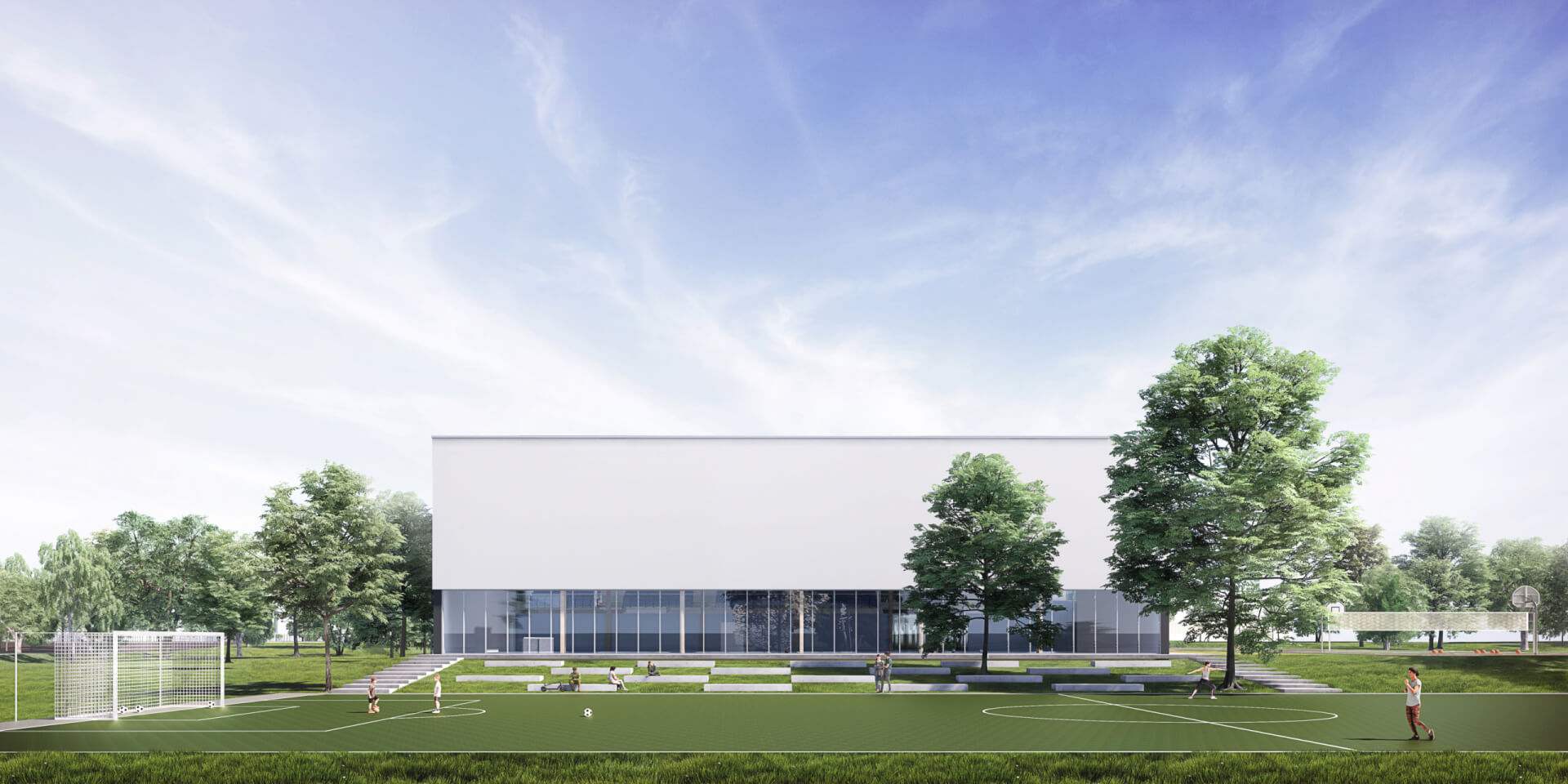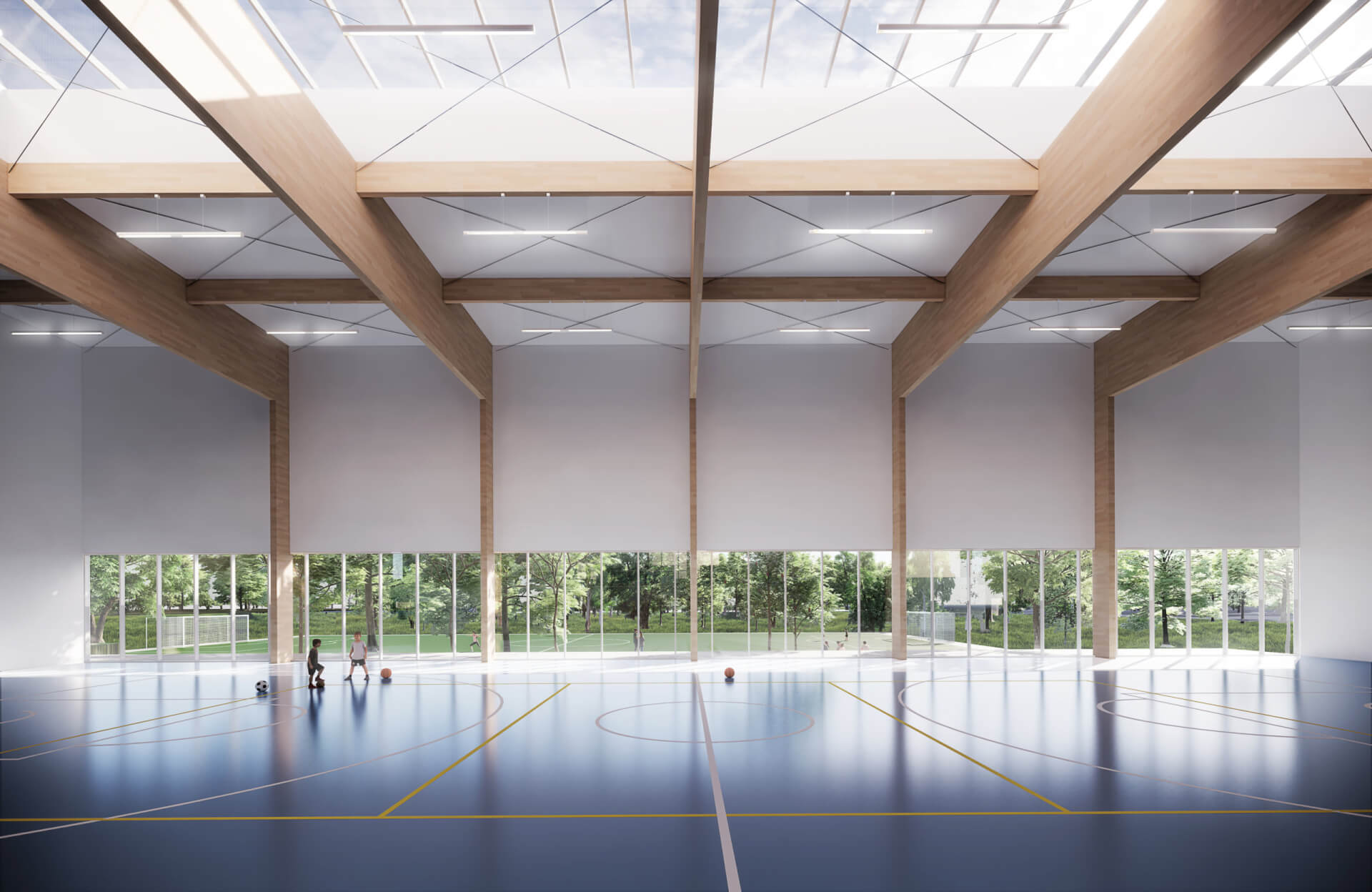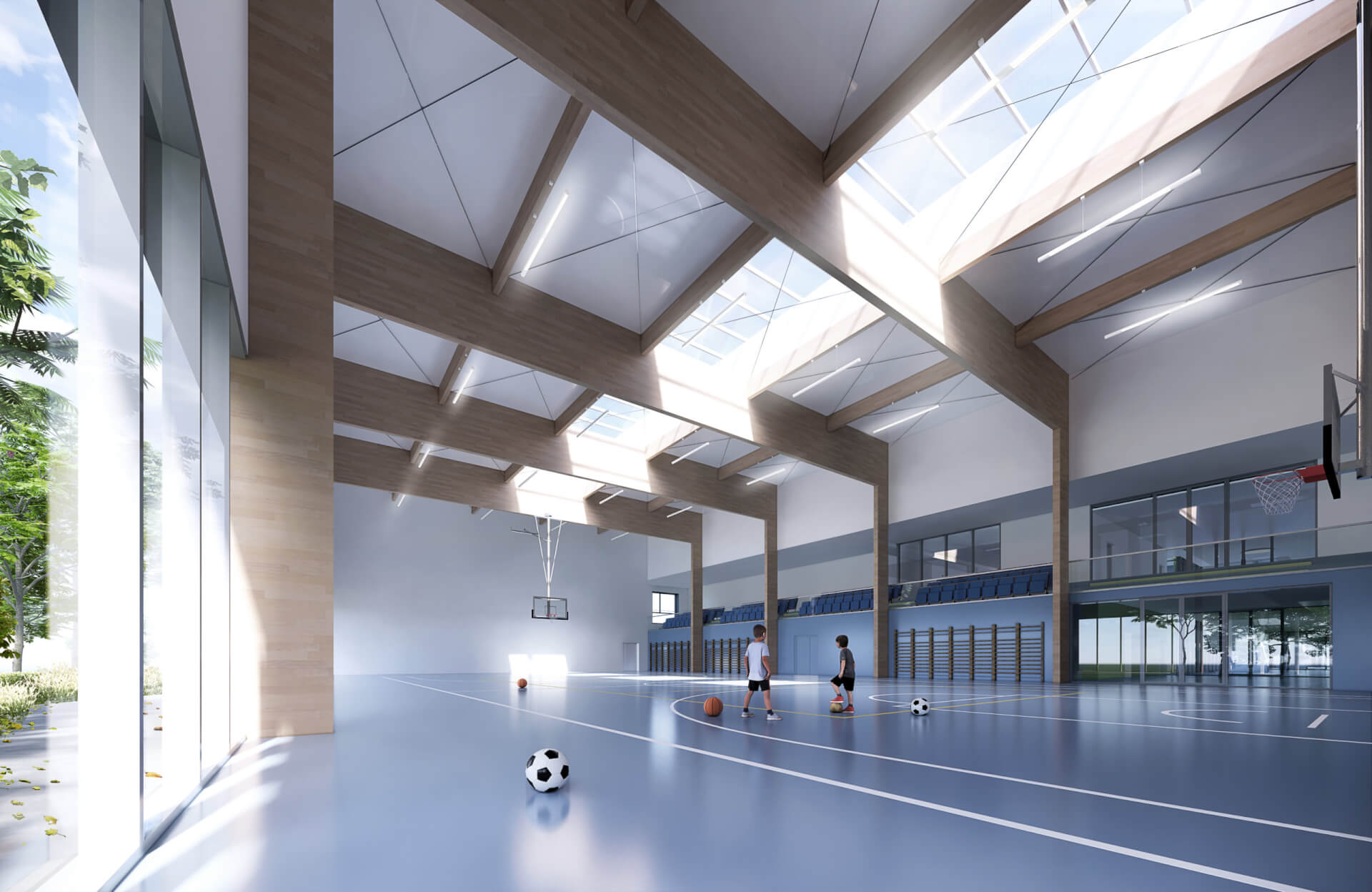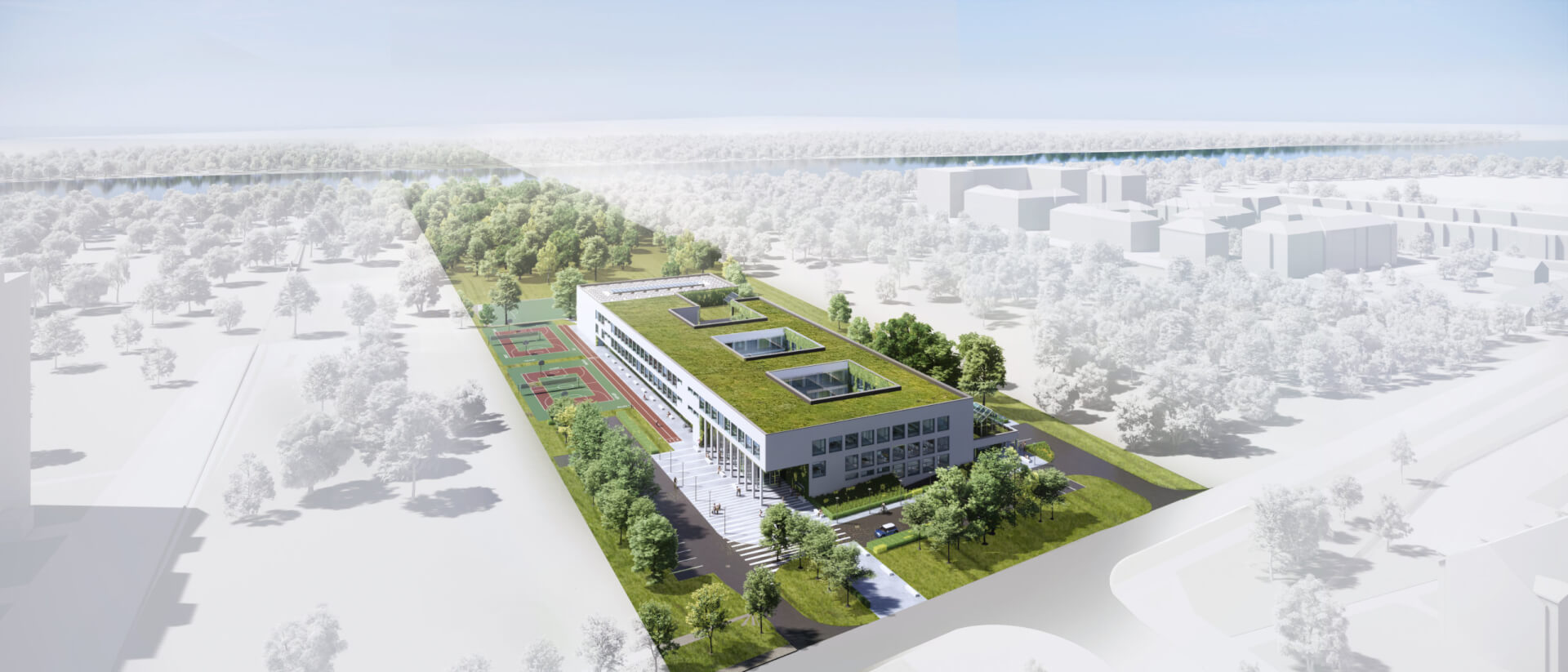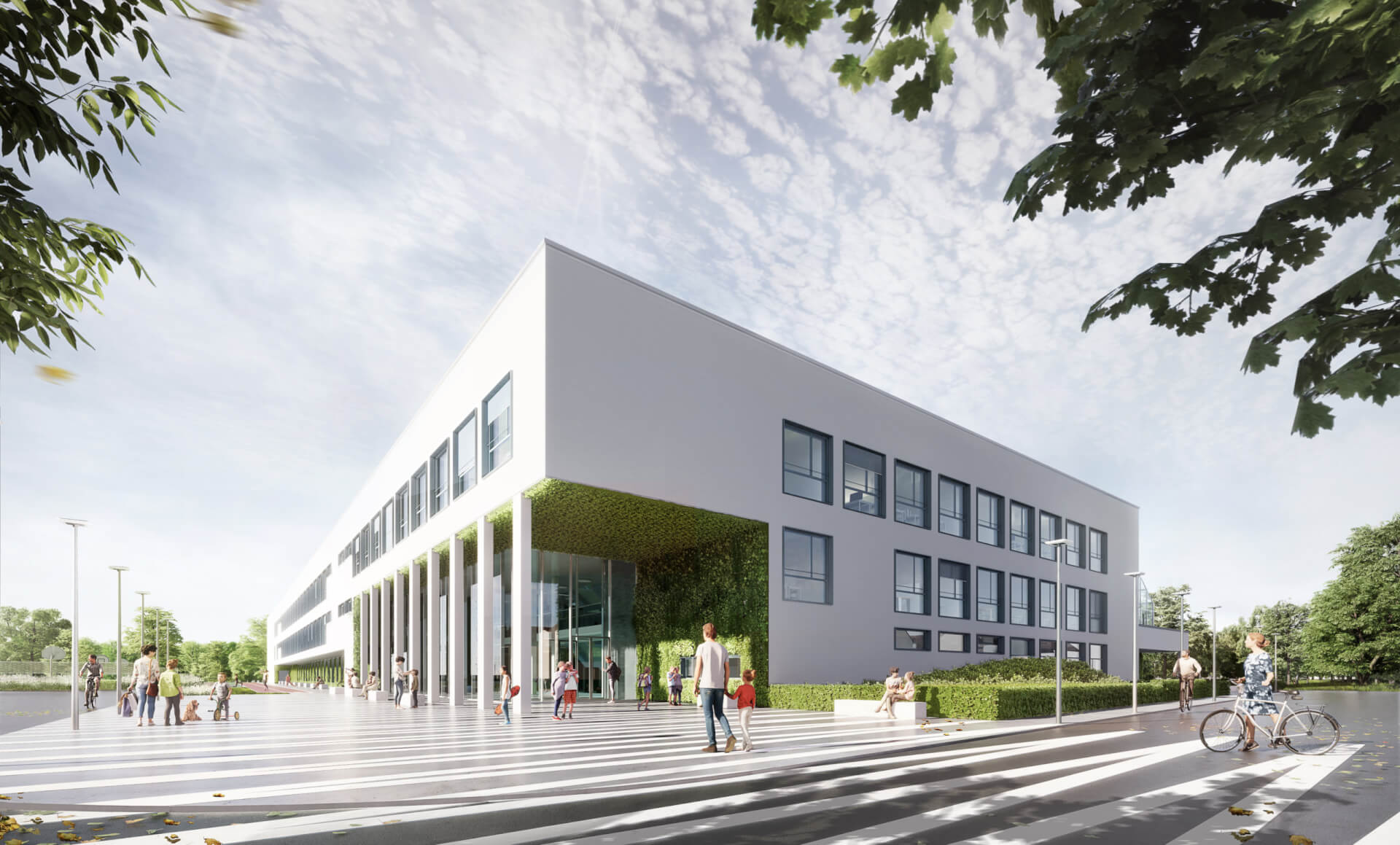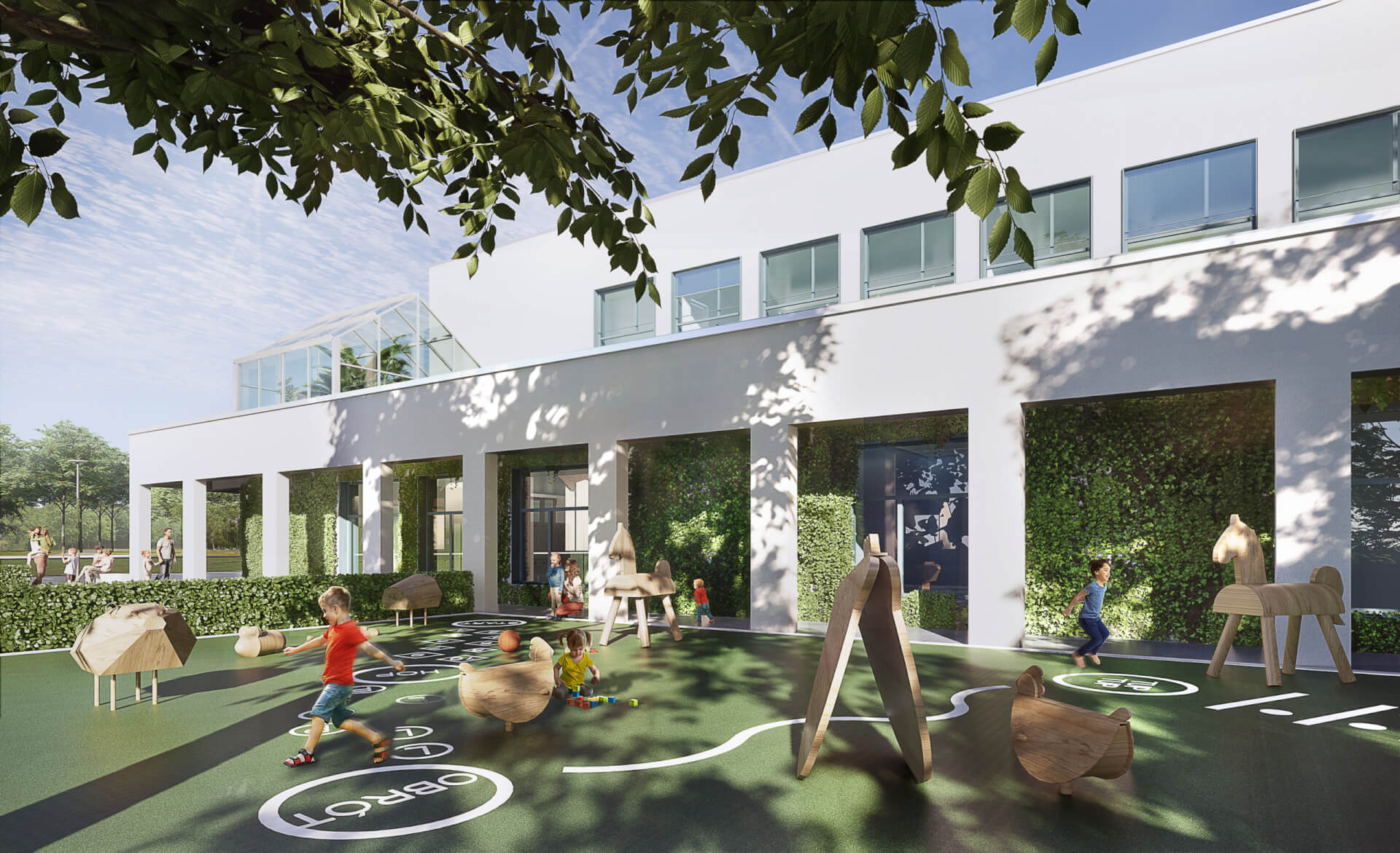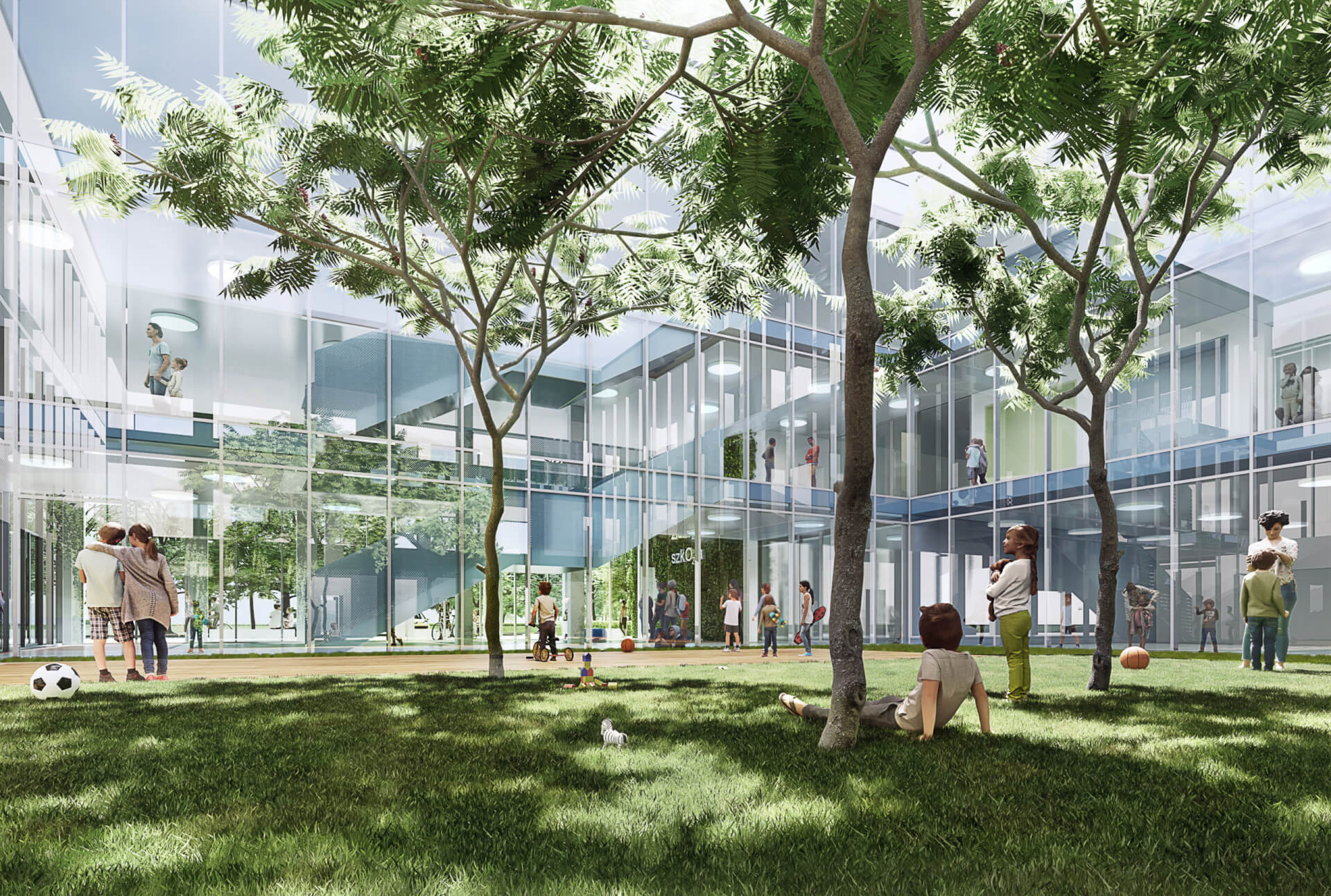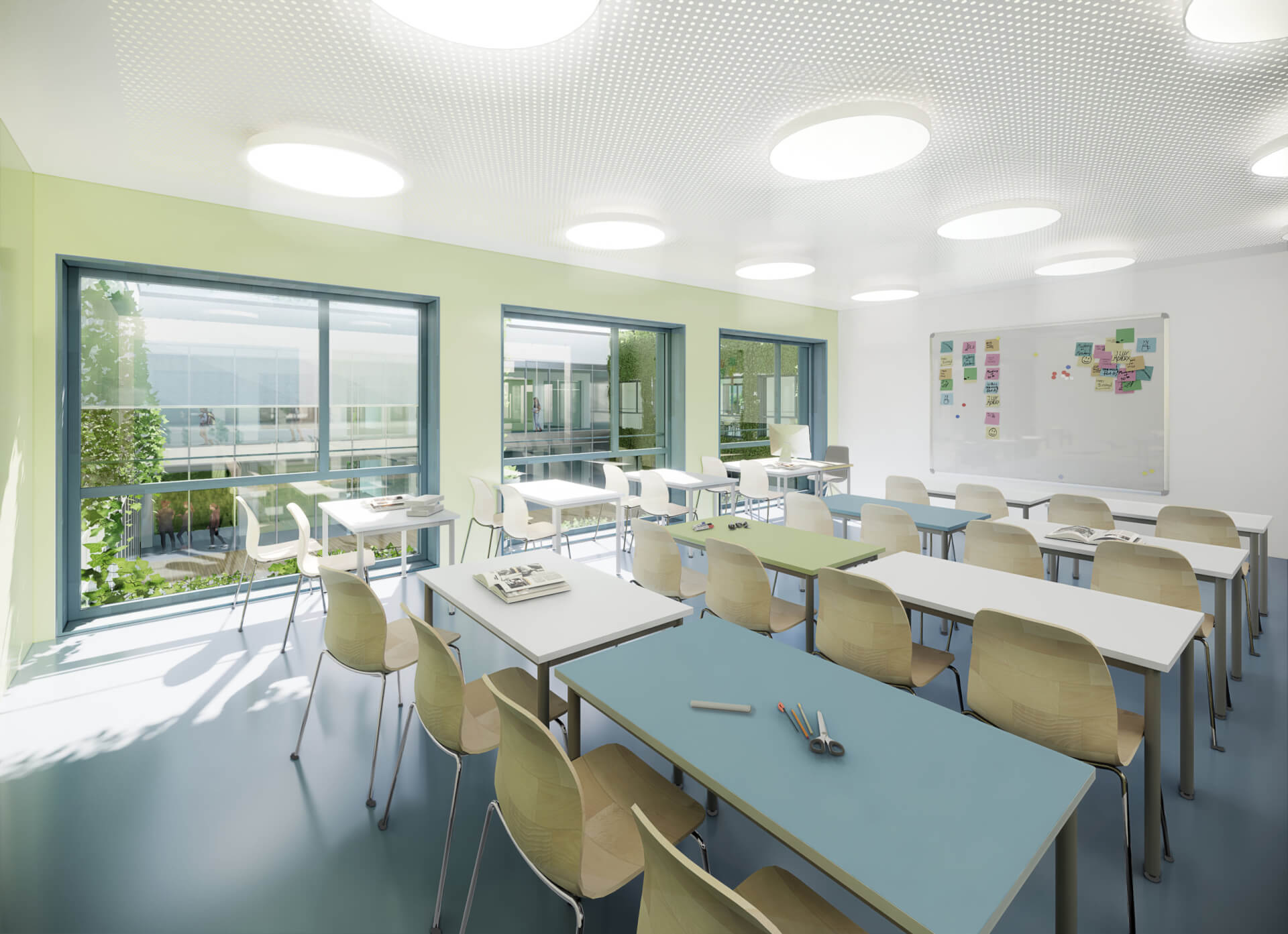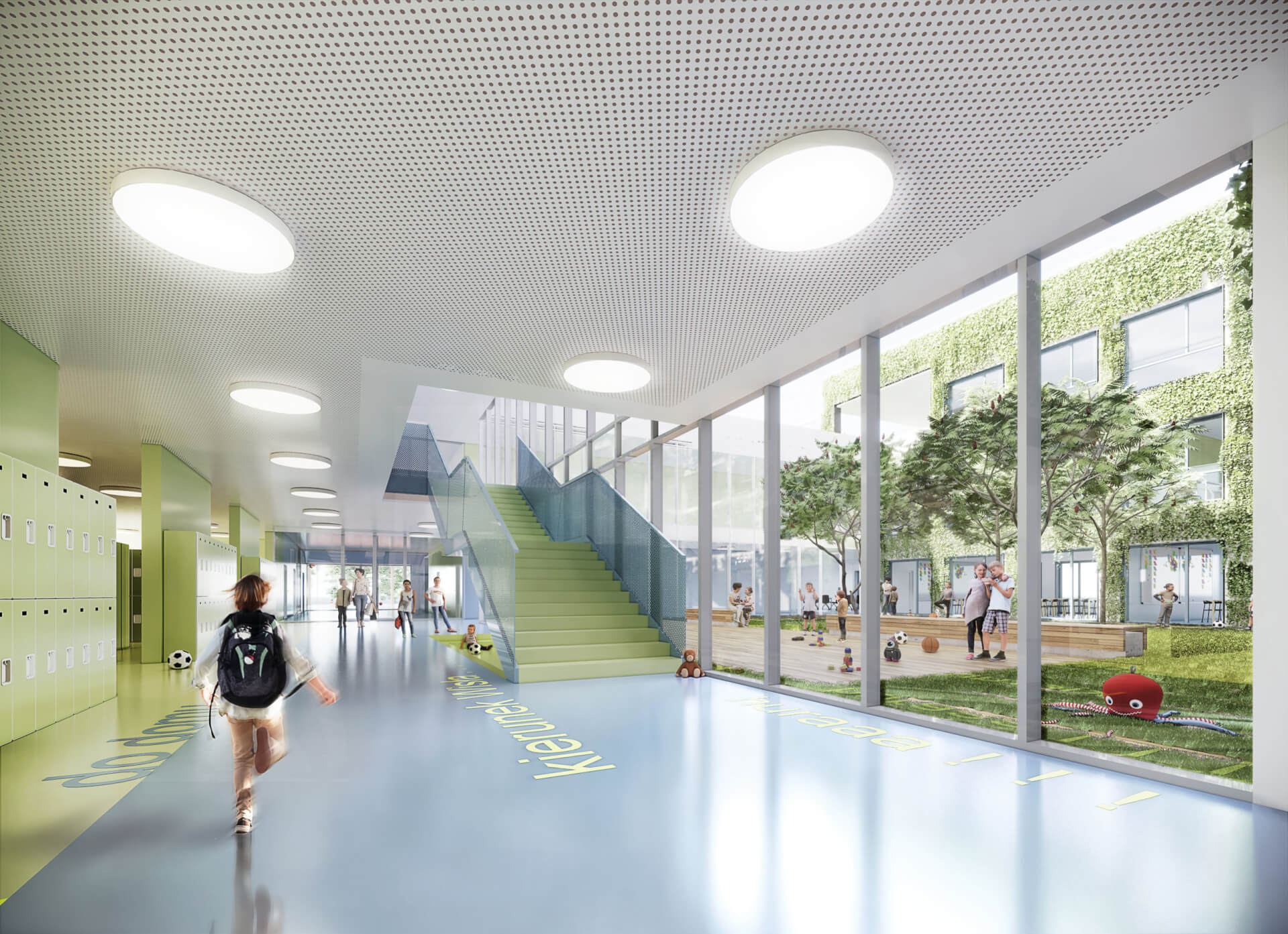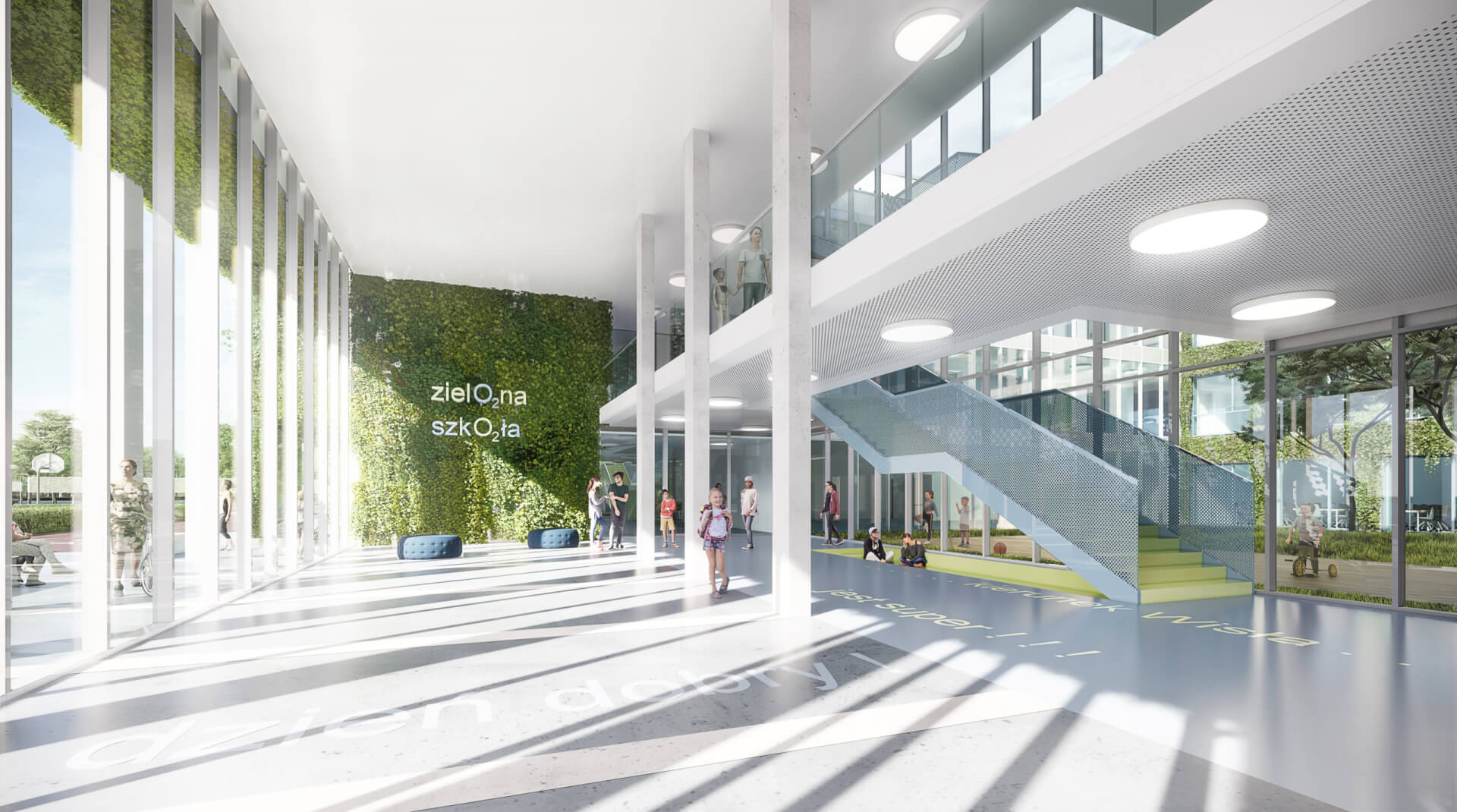primary school
Spirit of the Place. The project commenced with an inequitable clash between us and the mosquitos… In this context, our walk through a meadow along the Vistula River turned out to be a disaster. We just wouldn’t give up. Swinging our arms and laying waste to the pestilence, we pressed on through a plot of land which became more alluring with each passing step. The noise from the busy intersection at Świderski Street quieted down when we headed just a short distance toward the river. We submerged into idyllic silence with surprising speed, a remarkable feat given that we were in the heart of the city. The setting grew wilder with every step we took toward the Vistula. Enormous cottonwoods, elms, willows, and various shrubs created a thicket not unlike that of the Amazon Forest.
Those who make it through the wilderness will be able to see the lazy river flow of the Vistula, a “free” and remarkable river among her European counterparts. No other E.U. capital has been slit and carved with such natural grace as this.
Having made the trip, marked with bug bites, we became convinced that the project will require harmony with nature and that its principal muse will be the Vistula and her splendid terrain.
Sunlight and Nature. In addition to the two primary components – the Vistula and her natural greenery – we had to include one more – the essential educational factor. Besides being a highly-nuanced “spatial machinery”, it calls for a contextual element comprising light, namely sunlight. The contemporary classroom must have an abundance of daylight. This fundamental requirement has de facto shaped our “barge of illumination”.
The borders of the plot make it so that any building constructed in the north-westerly direction would not be able to provide the required four class hours of sunlight between 8am – 4pm. On the other hand, situating the building along the borders allows for optimal use of such a relatively small plot of land for a project of this size.
Liability turned into an asset. Three decks were carved into a basic solid which allowed for classrooms to be placed on the southern and southeastern levels. This resolved the issue of technical requirements while simultaneously and most importantly giving the building its character. The simple, small, rectangular solid would not have had such user-friendly dimensions had it not been for the decks. Without these green spaces, a school of this size would overwhelm its younger and older students.
Meanwhile, the combination of decks (patios) and terraces allows students to take their eyes off their work, look outside, glance the sky from the hallway and break the monotony. As a result, transit space between classes becomes a completely new experience. It is no longer just another hallway but the main stream of the school, a Vistula “tributary”, the axis on which the layout of the entire space is based.
School activities revolve around enclaves of greenery which become awesome recreation areas and quiet rest spots to be used even for the quickest of breaks. The greenery calms the senses, provides shade on hot days and releases oxygen. It is precisely why, in green shoO2l, it has become a kind of “building block”. In place of colorful wallpaper, we suggest a variety of climbing ivy which should be the first to cover disturbed surfaces such as outside corridors and patios. These may be gradually expanded over time. Well-maintained and watered lush greenery will quickly fill trellises, while the school acquires its unique eco-identity. The building will live in accordance with the seasons. In the fall, the vines, full of sunlight, will turn purple. Irish ivy will be green even in the winter and spring will be a great time for green classes.
Around the patio and towards the Vistula – about simplicity and clarity of a complex functional school organism. The school apparatus is geared toward the perfect lesson plan. The ground floor houses all essential utilities which require direct access to the outdoors.
The kindergarten, with a separate northwestern entrance, its own patio and charming arcades near the playground, functions as a separate unit. Technical channels allow the staff to be connected to the cafeteria and the main school area. All potential conflicts with other users have been eliminated. Upper levels have direct access to the outside via evacuation channels which will not be accessible on a daily basis (controlled access).
The main lobby is an extension of a large, partially covered outside area which flows inward and leads to various parts of the school. This is a large, two-story space visually connected with a green patio, cultivating an impression of openness and accessibility of this institution of learning.
This will be a kind of melting pot, yet the main flow of the transit axis (“destination Vistula”) will quickly branch off to areas such as locker rooms, cafeteria, the gym, or to an upper floor for a meeting with a teacher. The school community is greeted by the green wall, the only systemic component having to do with plants. Bringing vegetation inside is indispensable here. The school logo—green schoO2l—will be a recognizable one, hence this technically challenging element.
The central part of the building (beneath the central patio) houses the school cafeteria with a full kitchen running smoothly along the northwestern part of the building. This is an essential space for every student and its central location is key to the proper functioning of the school. While the cafeteria does not have direct access to the patio, it is connected to it with skylights. The look of the cafeteria also features natural plant elements.
Further on, the swiftly flowing school stream leads us to the locker room area. This is a place where lots of activity takes place, which is why its layout and location on the ground floor and not in the basement, are so important. The well-lit spaces are located near the next patio which gives them their open and friendly feel.
There are several common rooms around the courtyard and near the locker areas. These spaces also need to be on the ground floor because the location allows for a “private” patio. This is an essential element. No one can “shut” kids in classrooms. You can always “banish” them outside. The merits of this cannot be overestimated.
The final attractions along the blue-water transitway are the gym, backroom, fitness room, storage area and showers. This is a separate unit which can function outside regular school hours. It has a separate entrance accessible from the underwing which stretches all the way from the main entrance.
The hall itself is a very simple wooden space with the bottom of the hall rising 26 feet above the floor. Part of its appeal are the bleachers, small in size, which make this a multi-purpose space capable of hosting a variety of events. It also features a horizontal window which stretches along the entirety of the south side. Far from being a mere exercise in esthetics, it epitomizes a steadfast trailing of the Vistula. The panoramic casement opens onto the soccer field, exterior recreational area with spacious exterior bleachers and the riparian woodlands. Meandering paths along the river make this a great hiking trail.
The next level is strictly instructional in nature and intended for young children, grades 1-3. The kids’ level also has its own patio which sits directly above the school cafeteria. The young students will be able to take advantage of their own space during every break and recess. Beside a 60ft x 60ft courtyard, there are the so called “green classrooms” on the terrace above the kindergarten. It’s the ideal place for gardening, planting herbs, berries, and small shrubs. This could also be a place for a small beehive which would make for an excellent eco-learning tool. A small greenhouse would be a great addition. This will be an excellent space for acquiring practical knowledge about nature, climate, and various other aspects of human life.
Situated at midlevel, by the main hall, are the teachers’ and administration offices along with the school library.
The third floor is the domain of the older children and teens. As all other floors, it has its own patio known as the “art deck”, because it is located next to the art room. Aside from its excellent lighting, the room has an awning for outdoor drawing and painting.
Besides housing the rec-area, the terrace can also be used for eco-learning and green classrooms for grades 4-8. A greenhouse may be located on this floor too.
Solutions for shaping the interior space. Both floors intended strictly for learning are subdivided with “thick” walls which contain elements supporting each space. For the most part, these are a sort of permanent furniture pieces such as recessed seats, green caverns, deep closets or sinks in chemistry labs.
The functional walls are a permanent fixture and give the spaces their character and flow. They are like familiar furniture which unlike movable pieces will stand the test of time. Aside from these simple, practical solutions, the hallway on the top floor houses some additional permanent yet versatile fixtures such as seats and a tabletop for comparing class notes.
Hmmm… How fun would it be to go back to a school like that…
 all
all 